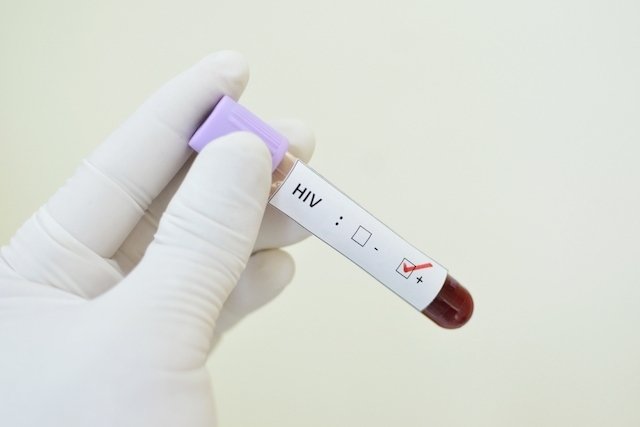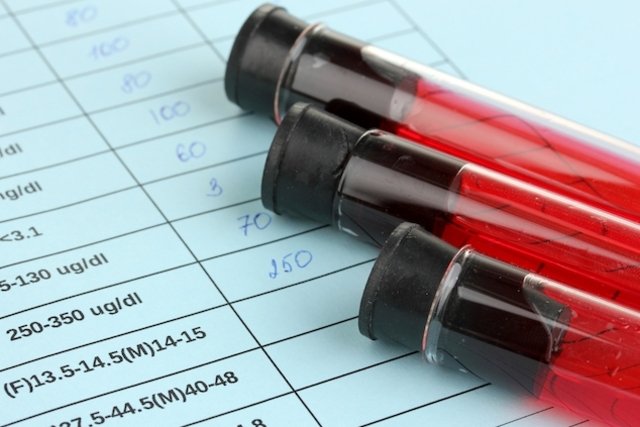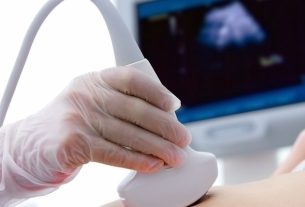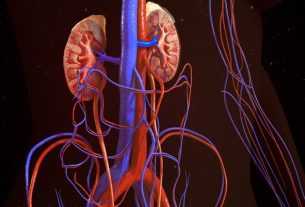The HIV test is carried out to detect the presence of the HIV virus in the body and must be carried out at least 30 days after exposure to risk situations, such as unprotected sexual intercourse or contact with blood or secretions of people with the HIV virus.
The HIV test is simple and is mainly done by analyzing a blood sample, but saliva can also be used to check the presence of the virus in the body. There are three types of HIV tests that look for the presence of antibodies produced by the body against the two types of existing viruses, HIV 1 and HIV 2, or the presence of antigens or nucleic acid from the virus.
Based on the test results, the doctor can recommend more specific tests to confirm the infection and check the viral load in the body and, thus, be able to start the most appropriate treatment to prevent the development of AIDS. Find out more about HIV and AIDS.

When is indicated
The HIV test must be carried out at least 1 month after the risk behavior, as the immunological windowwhich is the time between contact with the HIV virus and the possibility of detecting the virus in the body, is approximately 30 days.
If the test is carried out before the 30-day immunological window, there is a possibility of a false negative result. In these cases, it is recommended to repeat the exam after the immunological window period. Learn more about the HIV immunological window.
Although it is considered that the immunological window for HIV is 30 days, it is possible that this time varies according to the person’s immune system, so that before this period the person may already have a sufficient amount of virus in circulation capable of stimulate an immunological response and be identified in the blood test.
Types of HIV testing and the immunological window
There are different types of HIV tests that can provide results before the 30-day immunological window, the main ones being:
- Rapid antigen/antibody test: done with a sample of blood taken from the fingertip, HIV can be detected between 18 and 90 days after exposure to the virus. See how the rapid HIV test is performed;
- 4th generation antigen/antibody ELISA test: done by taking a blood sample to be evaluated in the laboratory, which can detect HIV between 18 and 45 days after exposure to the virus;
- Nucleic acid test (NAT) or molecular examination: also carried out in the laboratory with a blood sample, being able to detect the presence of HIV RNA approximately 10 to 33 days after exposure to the virus.
If the doctor recommends that a molecular test be carried out with the aim of identifying the virus in the bloodstream, it is recommended that blood collection be carried out preferably in the 3rd week of infection, as during this period it is possible to observe a higher concentration of the virus in the bloodstream. blood.
After this period, the virus is already inside the cells, making its identification more difficult and, therefore, an antibody test is recommended.
How to understand the result
The result of the HIV test must be interpreted by the doctor taking into account the type of test that was performed, the person’s risk behavior and the date on which it occurred.
Do you have questions about your exam results?
The HIV blood test is carried out with the aim of identifying the presence of the virus and its concentration in the blood, providing information about the stage of infection. HIV testing can be done using several laboratory diagnostic methods, the most commonly used being the ELISA method.
The possible results of the ELISA test are:
- Greater than 5.00 – positive or reactive result: means that the person was in contact with and became infected with the HIV virus;
- Between 1.00 and 5.00 – undetermined result: In this case, the test must be repeated because the sample was not clear enough. Some situations that lead to this type of result are pregnancy and recent vaccination;
- Less than 1.00 – negative or non-reactive result: means that the person is not infected with the HIV virus.
In case of a positive result for HIV, the laboratory itself uses other methods to confirm the presence of the virus in the body, such as Western Blot, Immunoblotting, Indirect Immunofluorescence for HIV-1. Therefore, the positive result is really reliable.
In some laboratories, a value is also released, in addition to indicating whether it is reactive, non-reactive or indeterminate. However, this value is not as clinically important as determining the positivity or negativity of the exam, being only interesting for medical monitoring.
In the case of an indeterminate result, it is recommended that the test be repeated after 30 to 60 days to verify the presence or absence of the virus. In these cases, the exam must be repeated even if there are no symptoms, such as rapid weight loss, persistent fever and cough, headache and the appearance of red spots or small wounds on the skin, for example. Know the main symptoms of HIV.
Rapid HIV test
Rapid tests for HIV assess the presence or absence of antibodies produced against the virus and are done using a small sample of saliva or a small drop of blood to identify the virus. The results of the rapid test are released within 15 to 30 minutes and are also reliable, with the possible results being:
- Positive: It indicates that the person has antibodies against the HIV virus, which is indicative of infection. However, it is recommended that the ELISA blood test be carried out to confirm the result;
- Negative: It indicates that the person does not have antibodies against the virus, so it is considered that the person is not infected with HIV.
Rapid tests are used on the street, in government campaigns at testing and counseling centers (CTA) and in pregnant women who start labor without having undergone prenatal care. See more details on rapid HIV tests.
What to do until the result comes out?
If the person has been exposed to the HIV virus, they should go to a health center or hospital to undergo a rapid HIV test and start Post-exposure Prophylaxis (PEP), which helps prevent the multiplication of the HIV virus and the emergence of infection.
PEP must be started within 72 hours of alleged exposure to the HIV virus, preferably within the first two hours. Find out how Post-Exposure Prophylaxis (PEP) is carried out.
When it can give a false negative result
A false negative result can occur when the person took the test within 30 days after risky behavior, which could have been sexual intercourse without a condom, sharing disposable syringes and needles or piercing with a contaminated cutting object such as knives or scissors, for example. . This happens because the body is unable to produce sufficient quantities of antibodies for the presence of the virus to be indicated in the test.
However, even if the test was carried out 1 month after the risk behavior, the body can take up to 3 months to produce sufficient antibodies against the HIV virus and the result to be positive. Therefore, it is important that the test is repeated 90 and 120 days after the risk behavior to confirm the presence or absence of the HIV virus in the body.
What is the viral load test?
The viral load test is a test that aims to monitor the evolution of the disease and check whether the treatment is being effective by checking the number of copies of the virus present in the blood at the time of collection.
This test is expensive, as it is carried out using molecular techniques that require special equipment and reagents, and is therefore not requested for diagnostic purposes. Therefore, the viral load test is only carried out when HIV infection is diagnosed with the aim of monitoring and monitoring the patient, being requested by the doctor 2 to 8 weeks after diagnosis or starting treatment and repeated every 3 months.
In general, the normal values for the viral load test are:
- Between 100,000 and 1 million copies: indicates a high result, representing a high rate of transmission of the virus and a greater chance of developing AIDS;
- Up to 10,000 copies: it is indicative of stability, in which, despite there being a chance of transmitting the virus, there is a lower risk of developing AIDS;
- Up to 50 copies: It is considered an “undetectable” result and may vary depending on the laboratory.
An indeterminate viral load result does not mean that there is no longer an infection, but rather that the virus is found in low concentrations in the blood, indicating that the treatment is effective. There is a consensus in the scientific community that when the viral load test is undetectable, there is a low risk of transmitting the virus sexually, however it is still important to use condoms during sexual intercourse.
Based on the test results, the doctor can evaluate the number of copies of the virus in the blood and compare it with previous results, thus verifying the effectiveness of the treatment. When an increase in the viral load is noticed, it means that the infection has worsened and, possibly, resistance to treatment, and the doctor must change the therapeutic strategy. When the opposite happens, that is, when there is a decrease in the viral load over time, it means that the treatment is effective, with virus replication being inhibited.

Sign up for our newsletter and stay up to date with exclusive news
that can transform your routine!
Warning: Undefined array key "title" in /home/storelat/public_html/wp-content/plugins/link-whisper-premium/templates/frontend/related-posts.php on line 12
Warning: Undefined array key "title_tag" in /home/storelat/public_html/wp-content/plugins/link-whisper-premium/templates/frontend/related-posts.php on line 13




